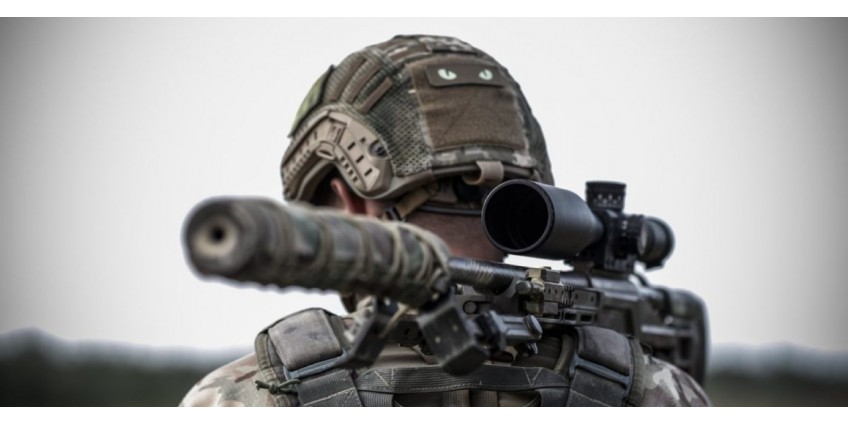
This product is not exportable outside the United States.
By adding this item to cart, you agree and acknowledge the Export Policy and confirm that you are a person in the United States with no intentions to illegally export the device.
This product is not exportable outside the United States.
By adding this item to cart, you agree and acknowledge the Export Policy and confirm that you are a person in the United States with no intentions to illegally export the device.


0

0


In our articles, we often discuss the achievements of science and engineering, which made it possible to bring military affairs to a new level. Looking back at the history of all these achievements, we see not only the permanent development of weapons and equipment. The paradigm of warfare itself is changing. In this context, we sometimes forget about the details, about more minor things that, in the end, turn out to be no less important than a piece of large equipment or a satellite intelligence network.
In this article, we would like to touch on one of these aspects - military optics. This is the thing, the use of which unlimitedly expands the potential of small arms, and it is this symbiosis that we will talk about today. After all, no matter how advanced and high-quality your gun is, it is not enough to point it in the necessary direction and shoot. The fighter must see his target and be able to adjust the trajectory of the shot. To do this, it is essential to know the goal. In addition, the range of the shot should correlate with the ability of the shooter to aim. This bundle must match the characteristics of each other.
The scope is an opportunity to avoid innocent victims and eliminate enemy soldiers more effectively. Thanks to weapon optics, we have records for a productive shot range of 3,871 yds. This record was set by the Canadian Army Joint Task Force 2 sniper Wali using a McMillan Tac-50 sniper rifle. Naturally, at the same time, he used the best rifle scope, which could be installed on the McMillan Tac-50. Otherwise, the legendary shot would not have happened. This record has become an ideal fusion of the shooter's outstanding professionalism, the weapon's reliability, and the information content of the rifle scope. Just think about this record a little longer because it is impossible to realize all its fantasticness at once. That fusion of man and his tools is difficult to recognize at once. Therefore, we will try to explain it in more detail.
During the Vietnam War, the first significant achievement in the long-range shooting was established. American sniper, war hero, and iron man Carlos Hathcock with a telescopic-scoped .50 caliber M2 Browning heavy machine gun set the record for a 2,500 yd effective shot. This fantastic achievement lasted for almost forty years. We can conclude that such a long-range kill was essentially the merit of the skill and luck of the shooter himself and, to a lesser extent, the value of the weapon and sight.
And, only 35 years later, starting in 2002, the parade of overcoming this seemingly eternal record began. At the same time, one of the snipers eliminated targets at a similar distance, taking into account the vertical correction of 130 yards. We are not even trying to challenge the transcendent skill of these guys, but the weapons and optics created all the conditions for demonstrating this skill. You can read more about this and other heroes of sniper art in our article "The best snipers in history" https://www.agmglobalvision.com/the-best-snipers-in-history
So let's look into weapon optics, what sights are, how they appear, and how to sight in a rifle scope.
The algorithm has always been straightforward. Invent a weapon that will form a distance between you and the enemy. Teach this weapon to be effective at long range further to increase the distance between you and the enemy. To make such weapons easy to operate, compact and ergonomic. Make weapons accurate when used. Make it as precise as possible, which will lead to increased efficiency.

The aiming system solved the last two points, which today have transformed into a group of devices that can be called weapon optics. Even though such an algorithm is simple and clear to any sane person, it was tough to implement it. Because our thought always runs ahead of our possibilities.
Optics began its development as early as the 15th century, both as a branch of general physics and as applied science. As soon as technology allowed the creation of high-quality glass, the development of the production of lenses began. First of all, such inventions were of interest to astronomers and scientists who based their activities on observing the starry sky. The first prototype of the modern telescope appeared at the beginning of the seventeenth century. Moreover, the invention was so timely and expected that several independent scientists and inventors submitted their designs and applications for patents at once. This resulted in a small patent war in the Netherlands.

Further development of optics for personal use was rapid and quickly absorbed the innovations of the world, which was moving towards a cascade of industrial revolutions. There were no accidents either. For example, in the mid-seventeenth century, an important discovery was made by the English amateur astronomer William Gascoigne. His experiments with the Keplerian telescope left the device with the case dismantled. And when he returned to him, he noticed that the spider wove a web inside the telescope. It would seem nothing unusual for that time, but when the Englishman looked through his telescope, he found that the web was focused relative to distant objects. The discovery of this principle was a significant impetus for further improvement of telescopic sight.
With the advent of firearms, there was a logical desire to combine them with a device that could help better aim. The farther and more accurately the weapon fired, the more urgent the solution to this problem became. Therefore, in 1776 a spotting scope was attached to the guns of Charles Willson Peale and David Rittenhouse. Everything was not wrong and even worked. The only significant drawback was that the scope rings firmly held the optics on the weapon's body. And the optics themselves were bulky and did not usually allow the shooter to aim. And with productive aiming, the arrow hit hard with the recoil force when fired. In the same year, theoretical models of weapons with a telescopic sight were also described.
The idea has already been formalized in the minds of engineers and gunsmiths. Therefore, the invention of a functional rifle scope has become a matter of time. By the 19th century, this became possible. In New York, gunsmith Morgan James created a telescopic rifle sight that could be used in conjunction with firearms. His drawings have been published. Thus, the design created by the British-American gunsmith became used by many manufacturers. At the same time, eleven years later, William Malcolm of Syracuse, New York, invented his version of the scope. This device was innovative. It not only became a practical solution to withstand the recoil of weapons but also offered an increase in magnification from 3 to 20 times. This iteration of gunsights became the basis for both sides during the American Civil War. But, she was not unique. In the same historical period, the version by Davidson and Parker Hale was popular. Although, experts consider them worse.
In Europe, there was a parallel development of additions to weapons. As in many other weapons areas, the pioneer in this industry was Austria and Germany. Austrian citizen August Fiedler built his version of the refracting telescope sight. This example formed the basis of many successful models used during WWII, demonstrating excellent results in both practicality and performance.
Germany went down in history not only as a country that, together with the USSR, unleashed the most terrible war in the history of humanity. But, as a country rich in pedantic, talented, and resourceful scientists and engineers. It was they who, by 1943, solved the fundamental problem and taught their soldiers to see in the dark. This happened thanks to the invention of the night vision rifle scope prototype. This device called the Zielgerät 1229 and with the intriguing and romantic code name Vampir, looked very ... strange. It was developed for the StG 44 assault rifle, actively equipped with Wehrmacht battalions. And it was, first of all, boxes attached to the back of a fighter. It was not just a night vision scope but a whole system carried by a soldier, with a bulky battery and an active infrared illumination system. Vampir was used in combat only a few times from 1944-to 1945 and did not bring many advantages to the Nazis. But what else to expect from NV device generation 0?
However, the possibilities of night vision technology have become apparent in practice, leading to an accentuated development of more and more new, practical and functional iterations of NV sight and thermal rifle scope.

For an ordinary person, far from the military or hunting topics, the topic we discuss may seem incomprehensible, distant, and empty. Those who are not confused by the phrase scope mouth wash, after all, the scope is just a hygienic liquid, not an optical device for your weapons. Such people do not look for nuances in a small tube mounted on the trunk. A snorkel is just a snorkel that can help aim. Everything is like in the movies.
But, if you understand the topic, if you are immersed in the nuances or choose between thermo scope and NV sight, you know the parameters of optics, which are extremely important to consider when choosing the device you need.
Magnification. It is hardly worth explaining the meaning and importance of this parameter. Indeed, everyone knows that this is the ability of optical equipment to bring the object of observation closer visually. Usually, this parameter is displayed as a symbol, for example, "x3", which means that the object of observation will look like you are three times closer to the object at this position. At the same time, a significant approximation is not always good. The closer you look at the target, the narrower the field of view and the more influential the impact of shaking.
Objective lens diameter. The diameter of the lens correlates with the amount of light that the lens is capable of transmitting. This parameter becomes especially important when we talk about night vision scope due to the dependence of NV technology on the amount of accumulated light. We will return to this indicator below.

Glare masking methods. This is a relevant, vital parameter for soldiers, especially for snipers. Obeying the law of physics, the lens can produce glare that can unmask the shooter even in the most prepared shelter. It is not yet possible to solve this problem in total. However, there are many options, from a special anti-reflective lens coating to a methodology for calculating the trajectory for choosing a position.
Infrared illumination. Also, the parameter is important, primarily for the night vision scope. IR light can replace the natural light that the scope needs to display in the surveillance area at night. He unmasks the shooter, and not only enemies but also some animals can reveal the position. Therefore, not only the military but also hunters should consider the presence of such an option.
Field of view. This is an important parameter that you must consider before shooting and buying optics. Field of view correlates with the optical design of the sight. In practice, this means an indicator that displays how many feet will be visible at a distance of 100 yards (linear value). Or how many degrees can be seen (angular value). If you understand these simple values, you will be able to identify the leading indicators of sight quickly.
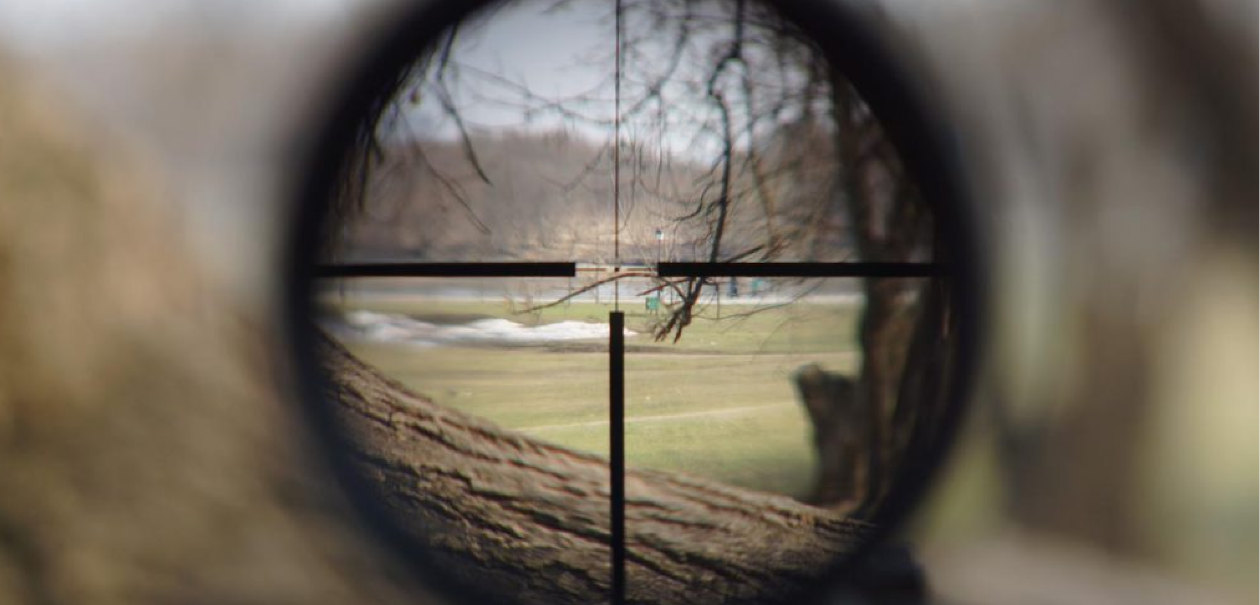
Exit pupil. If you are going to use combat optics actively and any other optics, you must understand how these devices work. Any device has an identical principle of operation. With it, the lens accumulates concentrated light in the exit pupil, whose diameter is equal to the diameter of the lens. For optimal light concentration efficiency and efficient light collection, the exit pupil's diameter should match the iris's corresponding dimension in the position of maximum expansion. This is approximately 7 mm at its peak in human form, but this figure decreases with age. If this balance is disturbed, the light begins to be lost, and the visual information content drops significantly. This leads to an effect called "lost light."
But, the apparent evidence of the correct answer here is misleading. The fact is that a large pupil exit is comfortable for her to use. This results in the shooter having no issues with image darkening or vignetting. This means several benefits, such as easier tracking of fast-moving targets.
At the same time, a telescopic sight can be very tiring for the eyes. In addition, there are apparent inconveniences to use during the day when the amount of natural light is limited. From this, we can conclude that sights with an enlarged pupil are a more adequate and comfortable choice, even though they do not use their potential to the maximum in the daytime.
Eye relief. Under this concept lies the meaning of the distance between the exit pupil and the rear eyepiece lens. A somewhat complicated interpretation is understood as the optimal distance between the shooter's eye and the eyepiece. He can productively operate the device and operate the device without the effect of vignetting. It is worth remembering that a significant focal length of the eyepiece means an increased removal of the exit pupil. Rifle sights used for civilian purposes have exit pupil removal from 0.98 inches to 3.9 inches. But, a much larger removal of the exit pupil is required for military weapon scopes. This is dictated by the fact that for military or police purposes, it is vital to minimize the notorious vignetting effect.
As in telescopic sights, the significant exit pupil also avoids periorbital injury, known as "idiot mark" and "sight bite." Put, injuries occur to inexperienced shooters who forget about the weapon's recoil or have poor control over it.
Also, those who wear glasses should consider this when choosing a scope. Even if they select a range for an air rifle scope, in which recoil is almost leveled. The glass of the glasses reduces the distance to the eyepiece. Therefore, it is better to make allowances for this nuance.
As well as the most delightful and practical things, the regular rifle sight is quite simple in design. Simple and elegant. Standard optics is just a tube with lenses. Exactly! A fusion of technologies and innovative solutions and materials, such as the latest generations of NV sight or modern thermal scope. An elementary design with endless possibilities, opening up new horizons for the shooter, literally. Of course, there are complex designs that cost a lot of money. But, their basis and basis in they are identical.

The objective lens is located on the opposite side of the shooter. Its task is to focus on the light. Below we will dwell on this vital part of the device. The reticle is placed in this focal plane. There are several main types of rifle reticle, including new developments and time-tested and war-tested options. Even she can increase the productivity of the shooter to a new level. In general, the role of aiming reticles is so high that it deserves a separate detailed story. Therefore, we advise you to read our article on this subject https://www.agmglobalvision.com/what-is-a-German-Reticle, where we tell in detail not only about the types of this element of the sight, but also give practical advice on how to choose the perfect pattern for your needs.

In its simplest form, the role of the reticle can be played by an ordinary dot. More complex drawings, only by their configuration, enable the shooter to calculate the trajectory of the bullet's fall at a distance and compensate for the force of the wind. With the ability to adjust the positioning of the pattern in horizontal and vertical positions, ballistic drop and wind control can be taken into account by the shooter. In addition, many scopes have built-in illumination, which naturally improves ergonomics and performance in adverse conditions.
Following the grid are zoom lenses. These optical elements correct the position of the image at the focal point, allowing the shooter to see the correct image rather than the inverted image created by the lens. The primary function of lenses, as their name implies, is to adjust the optical design to zoom in and out of the image. This happens mechanically by adjusting the distance between the zoom lenses of the erector. Also, it is worth noting that some manufacturers place reticles behind a set of zoom lenses.
The third crucial central part of the sight is the eyepiece. It is with this element that the observer acts directly, although remotely. Due to this element, a virtual image is created that allows the shooter to assess the observation area in the natural state of the eyes. Several manufacturers use the eyepiece to place elements correct for the parallax effect. But let's be honest - this feature is commonly used in erector lenses or objectives.
Also, although we have already mentioned this, we will once again draw your attention to the coating of the optical elements of the sight. Typically, such solutions are protective, preventing wear and tear of sensitive parts. But also anti-reflective coating, which is vital for shooters in the area of combat missions. It contains sniper identification.

This, of course, is an obvious point, but it is always worth remembering about it. After all, it is not enough to buy a high-quality rifle scope. It will help if it fits your weapon. Including you need to take into account the methods of fastening the device. So, it would help if you did a little homework so as not to make extra holes in your favorite gun. This is not the only problem you may have when choosing the perfect option for you and your weapon.

As we have already mentioned, increasing the observation area and shooting assistance is not the main requirement for a modern sight. Don't forget about weapon recoil. It affects not only the state of the optics but also its positioning on the weapon's body. Therefore, often the optics are attached using two rings. But, for weapons with strong recoil, three rings are used. At the same time, for pistols where space for fixation is limited. Often, the weapon's design does not allow you to play it safe. At the same time, insufficient mounting can bring a lot of problems, and the presence of movement at sight at the time of the shot is the smallest of them.
Well-chosen rings, their places of fixation, and fastening density are the key to the durability and practicality of the device. If these requirements are violated, then there is a possibility of uneven load on the sight's body, which will lead to deformation or destruction of the body. This is especially true for weapons with powerful recoil.
Weapons with a specific design, in which the cartridge case is ejected at the top of the bolt, also require an inventive approach. The standard solution for this type is to shift the sight to the side. The second solution to this problem is to install a sight with a long eye relief relative to the shutter.
But, in any case, even if you are well aware of the standard problems and nuances, we still advise you to contact a professional. If not for help, then for advice.

Usually, the weapon does not have unique platforms and structural elements for mounting the sight. Therefore, scope rings are the most accessible, most efficient, and non-invasive option for fitting optics. Given that the central element of the optics is a round main tube, scope rings look like an ideal solution for mounting and operating a standard scope. The tighter the rings fit the body of the optics, the more reliably they mate with the body of the gun, the more monolithic the symbiosis becomes, and the longer the demanding design will last. And we have already mentioned the main problems with returns above.
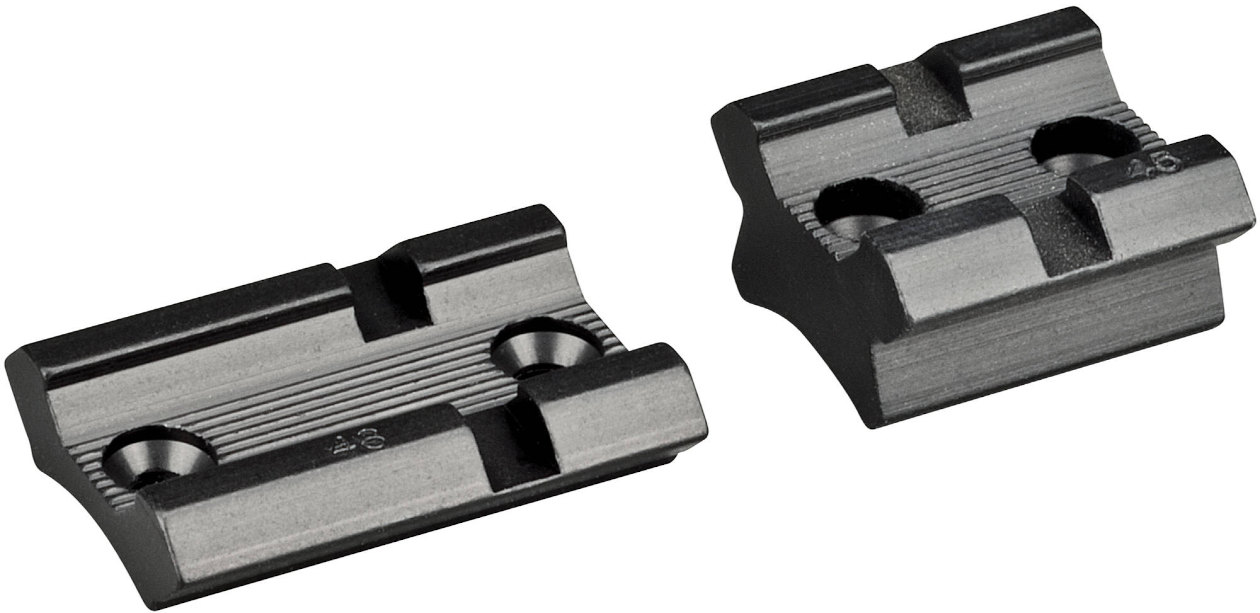
At first glance, this is the most convenient and straightforward option to install optics and additional weapons devices. But, it has several disadvantages. First of all, they are connected with the fact that the scope bases must be tightly fixed on the weapon's body. As a result, the weak point of this design is the bolts or other methods connecting the two elements. In the event of wear or fatigue of the metal, or if the installation was performed in violation of engineering requirements, the consequences can be disastrous for the optics. Also, it is worth remembering that there are several types of scope bases, in our opinion - more than necessary. This is more driven by the vanity of some gun manufacturers than by necessity.

A feature of the design solutions of some European companies is the ability to install rails at gunpoint. This allows for an installation that does not require the use of rings at all or requires the use of a single ring. A significant disadvantage of this design is that the mounting rails cannot be dismantled, as they are almost a monolithic part of the body. On the other hand, this engineering solution provides incredible variability in installing a weapon sight, allowing you to customize its position to the needs and desires of a sniper.
The clear advantage of such fasteners is the immobilization of the structure and its reliability. It can withstand even powerful recoil without deforming the components and creating a backlash. Due to the increased strength, the influence of the operating time of the structure also does not affect its condition.
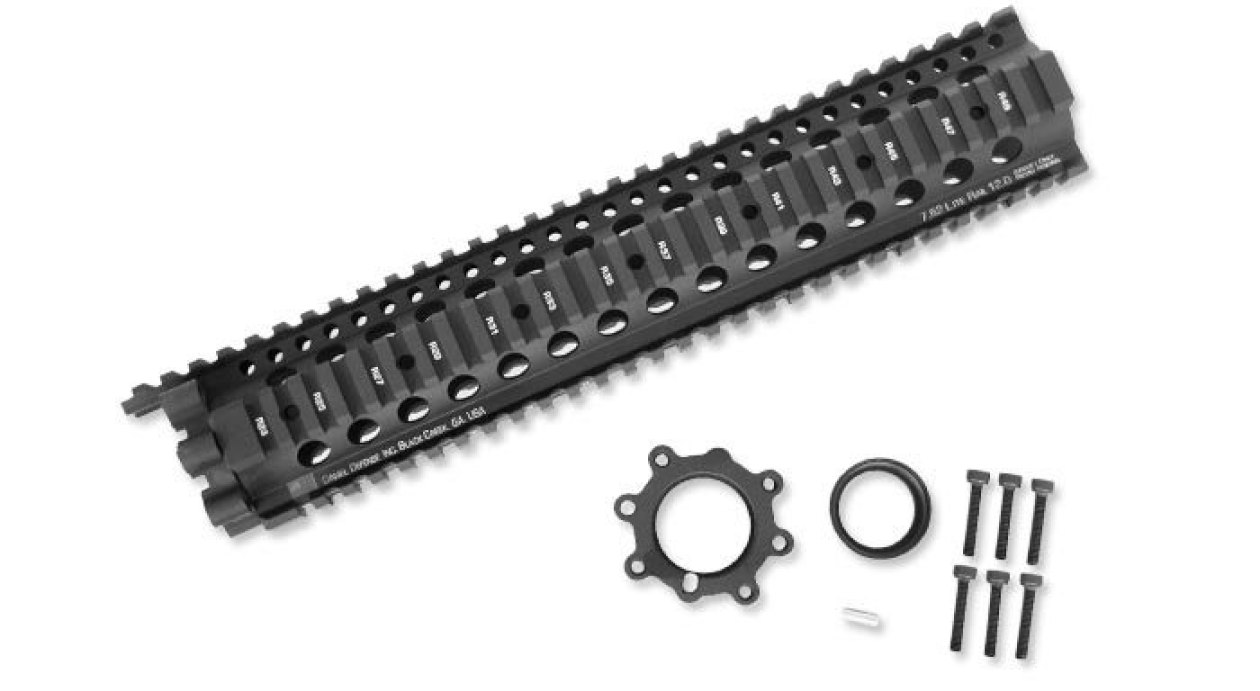
This type of mount includes the most famous and popular bar, which has become a universal solution for mounting sights and other weapons devices. We are talking about the MIL-STD-1913 single standard Picatinny rail, also known as the "Pic rail," called STANAG 2324, after NATO adopted it in 1995. This is the most famous example of a rail interface system for mounting optical and other devices.
Interestingly, as many believe, the Picatinny rail is not named after the inventor or creator. This weapon element was named after the Picatinny Arsenal located in New Jersey. It was there that the system was developed and tested. Today it is a reliable, popular, and widespread option for both professionals and beginner shooters.
Not to mention the Weaver rail, which William R. Weaver developed in the 50s of the past. And, yes, in this case, the system's name was in honor of its inventor. She was the predecessor of the Picatinny rail and differed from it in the distance between the slots. In addition, they vary in size. At the same time, the Picatinny rail allows the installation of devices designed for the Weaver rail.
It's not easy to talk about types of weapon scopes. Not because it's an incomprehensible topic, everything is in order here - you can name a few of them without much thought. The problem is that it is difficult to determine the criteria by which devices should be divided. But, we will try not to focus on the classification and talk about what opportunities science and the market open for you.


We will start with the most standard, ordinary and unpretentious device. Fixed Scope is a basic scope and a good choice for beginners and those who do not need advanced tools. The device is remarkable because it cannot control the approximation since it does not have such functionality. There is only one level of approximation, and it cannot be changed in any way. Of course, this is not very convenient, but the price of such a product is significantly lower than other devices; therefore, you should carefully study the possibility of buying such a sight, especially for amateurs.
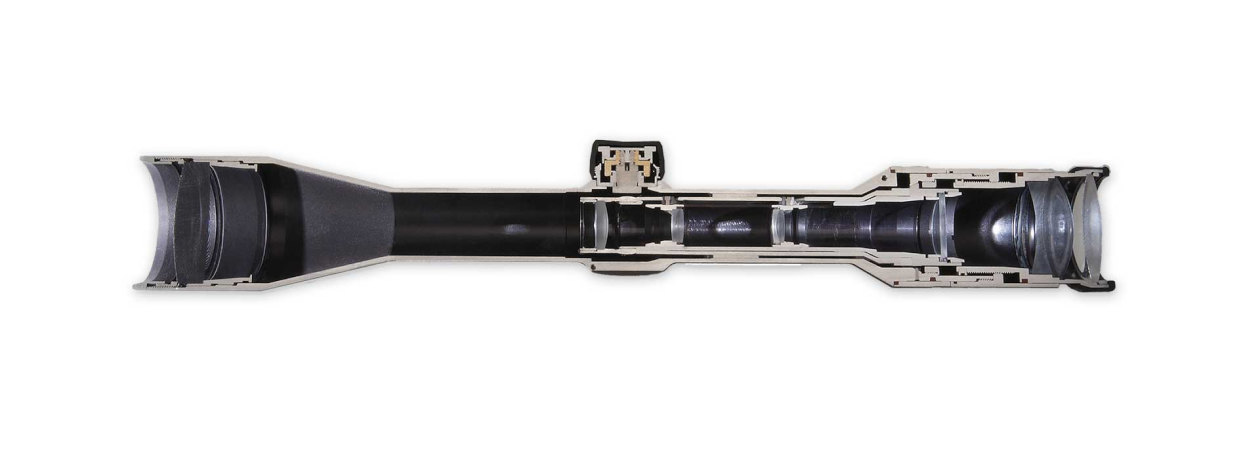
This sample is a device almost identical to the previous example. The essential difference is that it has a set of lenses and tools for adjusting the required level of approximation. Such sights are marked like this: 5-20X56. Where 5 is the minimum zoom level, 20 is the maximum zoom level, and the last number is the lens size in millimeters.
These are reliable and unpretentious devices that are not much more expensive than Fixed Scope but have more advanced features. Nevertheless, they do not provide for some functions that, for example, will be important for the military. This option will be good for both experts and beginners.
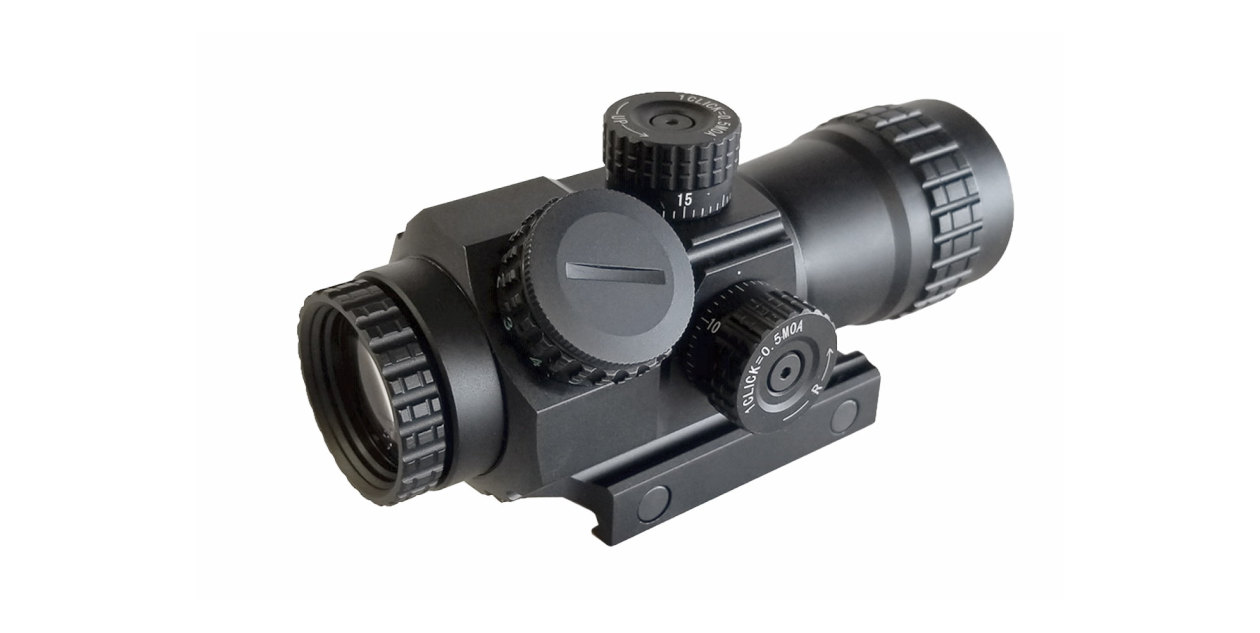
Today, almost everything that has something to do with the army or is painted in the color "khaki" is called "tactical." In this abundance of proposals that consider everything from tactical toilet paper to tactical underwear, it is easy to get lost and determine what is worthy of such a name.
Tactical Scope is as true to its name as possible. These are simple, reliable sights designed for narrow needs and specific purposes. They often have a low zoom level and a simple aiming reticle. A striking example of the productive use of such devices is the version designed for foot soldiers. For them, sights are created that do not exceed the magnification level of 4X. As practice shows, this is the best solution for infantry combat conditions.
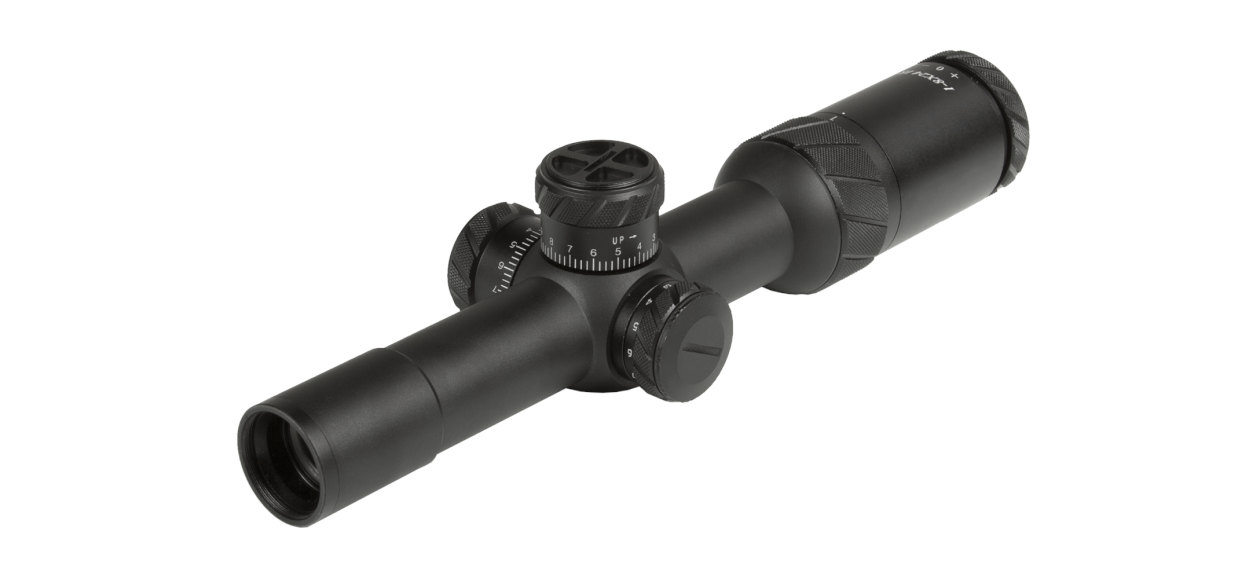
On our part, it is not entirely fair to unite a group of sights under this name. Indeed, it can be attributed to many sights, from competitive sights to ultra-long sniper devices. All sights with a magnification of 10X or higher belong to the Long Range Scope group. But, at the same time, they are so different that you can write more than one book listing the differences. And, yes, even long-range scopes have scopes that are range adjustable and some that don't have a zoom mechanism.

It is unlikely that you know, but sights for hunters can be distinguished into a separate category. Yes, they are indeed different from military or other devices. Firstly, the creators of such devices know their fate, making them durable and ready to survive temperature changes and weather changes. Secondly, the developer pays special attention to the purity and brightness of the image since these parameters are primarily critical for the hunter. Often, a manufacturer may sacrifice other features to achieve the maximum in these two parameters.
Also, usually, the magnification of hunting scopes does not exceed 20X because it is simply not needed. Thus, you get a time-tested and, in practice, the ideal device for a raid.

Sports shooting is also a specific industry that requires a unique approach. Keep this in mind when you urge to mount a Competition Scope to your combat or hunting rifle. They are not designed for this. These devices are too big. And besides, they are too fragile and limited in light perception. That's because athletes usually shoot small targets from a long distance in acceptable, calm conditions.
All of this raises another problem. Such sights are very heavy, especially compared to analogs for hunting and the army. Keep this in mind because installing such equipment on a conventional gun will introduce a noticeable imbalance when using it.

Popular culture has taught us the image of a sniper with a large rifle and a scope comparable in size to a weapon. But no. The reality is different from what is rooted in the public mind. A modern sniper uses an extraordinary small scope. Moreover, devices with a set magnification of 10X are presented in the army.
How can snipers be effective with such weak functionality? The answer is simple: the sniper's primary weapon is himself. Therefore, the main thing that he gets from the device is a specific and multifunctional grid, which allows the professional to take into account many relevant parameters and prepare the perfect shot. It should be noted that only experienced professionals can work productively with these reticles. They are so demanding and original.

This piece of equipment is as versatile as it gets. It has weak magnification capabilities that range from 2X to 8X and limited tuning options. In this case, this can not be attributed to the shortcomings. On the contrary, the device is reliable, simple, and performs its function.
And the function of this scope is to be an efficient and reliable device for use in wooded areas. That is why the military and deer hunters love it so much.
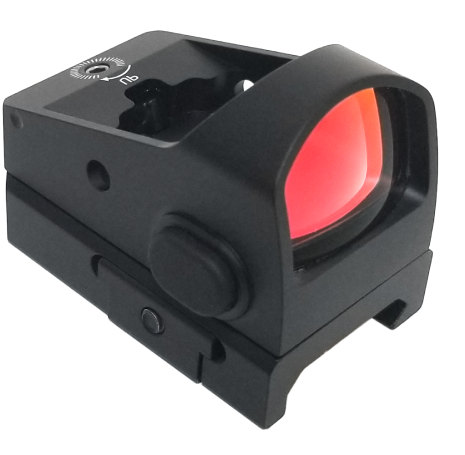
We decided to include this type of scope on our list anyway, although frankly, it doesn't quite correlate with the devices we're looking at. Collimator Sight and Red Dot Scope often do not provide magnification. All you get is usually a red dot on the crosshair screen that visualizes the direction of fire and is largely immune to the parallax effect. The red dot is visible only to the shooter, which distinguishes Red Dot Scope from Laser Sight, which is visible to everyone and can unmask the shooter.
But, using such a device, you will not be able to shoot long distances. Or rather, you can, but it will not help you. But, at close ranges, it will become your best friend, as it will help reduce the time between aiming and a quick shot.
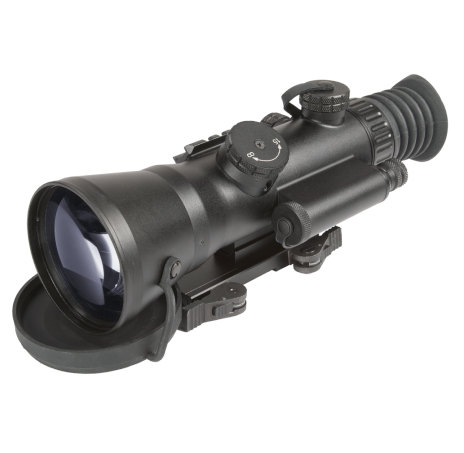
This is expensive, high-tech, amazing equipment. Fifty years ago, it was hard to imagine that anyone could buy a miniature scope to hunt at night. To be honest, it's hard to imagine how the engineers could create components so small that they fit in a small tube and withstand recoil.
NV technology practically repeats the night vision mechanism, which nature endowed nocturnal animals with. The device accumulates the available light, amplifies it, and transmits the visualized information on the displays. Of course, such a device is not universal since it requires minimal light. Even the one that comes from the moon is enough. But if there is no glow source, the device becomes useless. For these cases, most NV sights are equipped with IR emitters. But, it is worth remembering that infrared light can be easily detected both by other devices and by some species of animals.
Modern Night vision scopes have an extensive arsenal of digital capabilities: Video recording, WiFi connection, and various kinds of reticles. This is the device that is worth your money and your attention, and we will help you choose https://www.agmglobalvision.com/night-vision/night-vision-weapon-sights

Sights based on this technology are designed to solve the same tasks as NV sight, but they work according to a completely different principle. They register thermal signatures and visualize them in the color range. Due to this, the shooter receives an informative picture that allows you to quickly and in detail assess the situation.
Thermal sights are free from the disadvantages of night vision - they do not require light to work, and they can work in zero visibility conditions. But, at the same time, it is enough for the object of observation to go behind a wall or other dense barrier to become invisible to thermal vision.
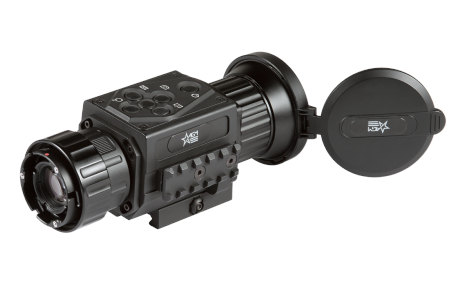
We cannot fail to mention this system. Its essence lies in conventional weapon optics and night vision devices. Special sights are placed in front of or behind the rifle scope, and this symbiosis allows you to enjoy all the benefits of night vision without parting with your favorite sight. This is a compromise, but you can still consider it, where our article on this topic will help https://www.agmglobalvision.com/getting-more-diversity-with-a-clip-on-system.
The choice of a weapon sight is one question that does not have a correct answer. It is interesting to study it. It constantly gives new inputs and gives unique opportunities. Looking at this industry is incredibly interesting, even describing them. And, to test them in practice is even more exciting.
Table of contents